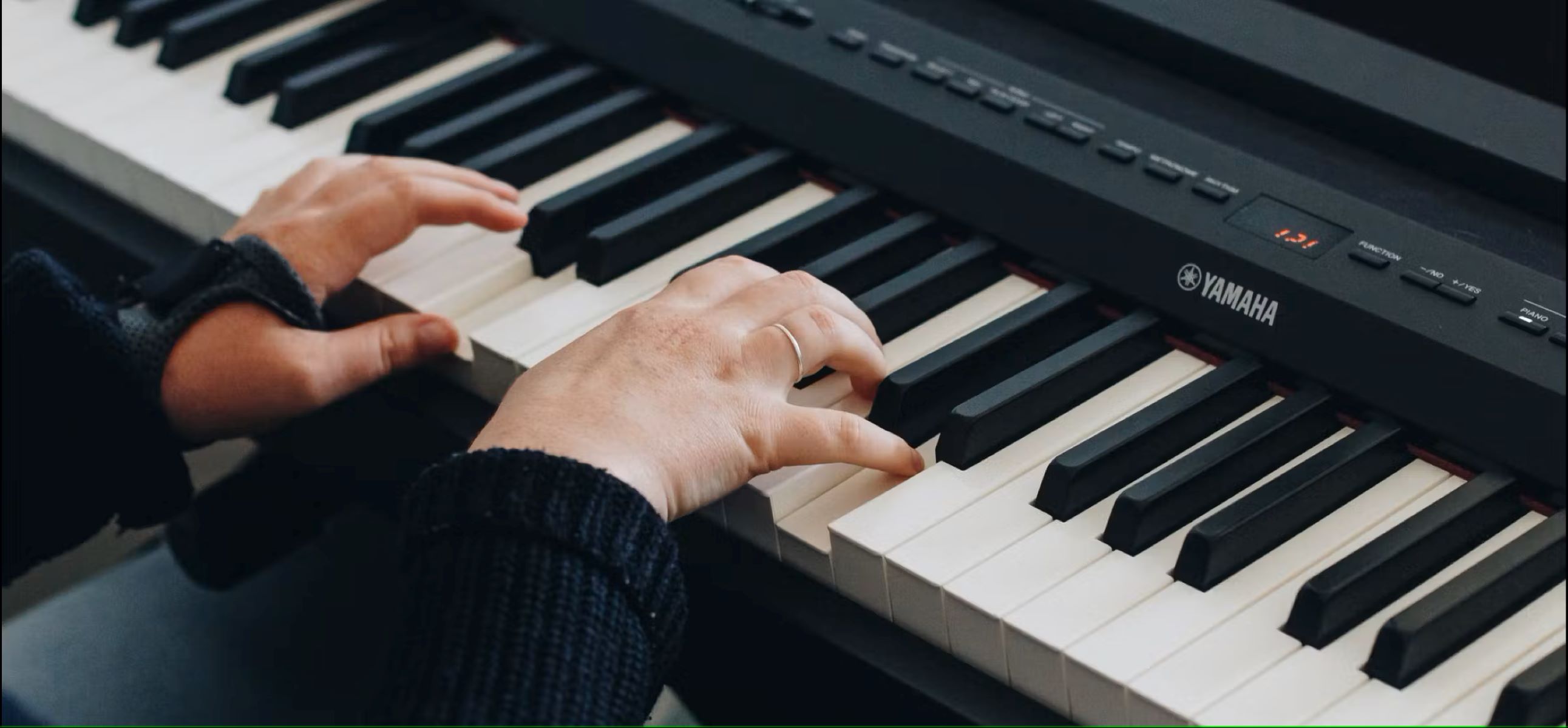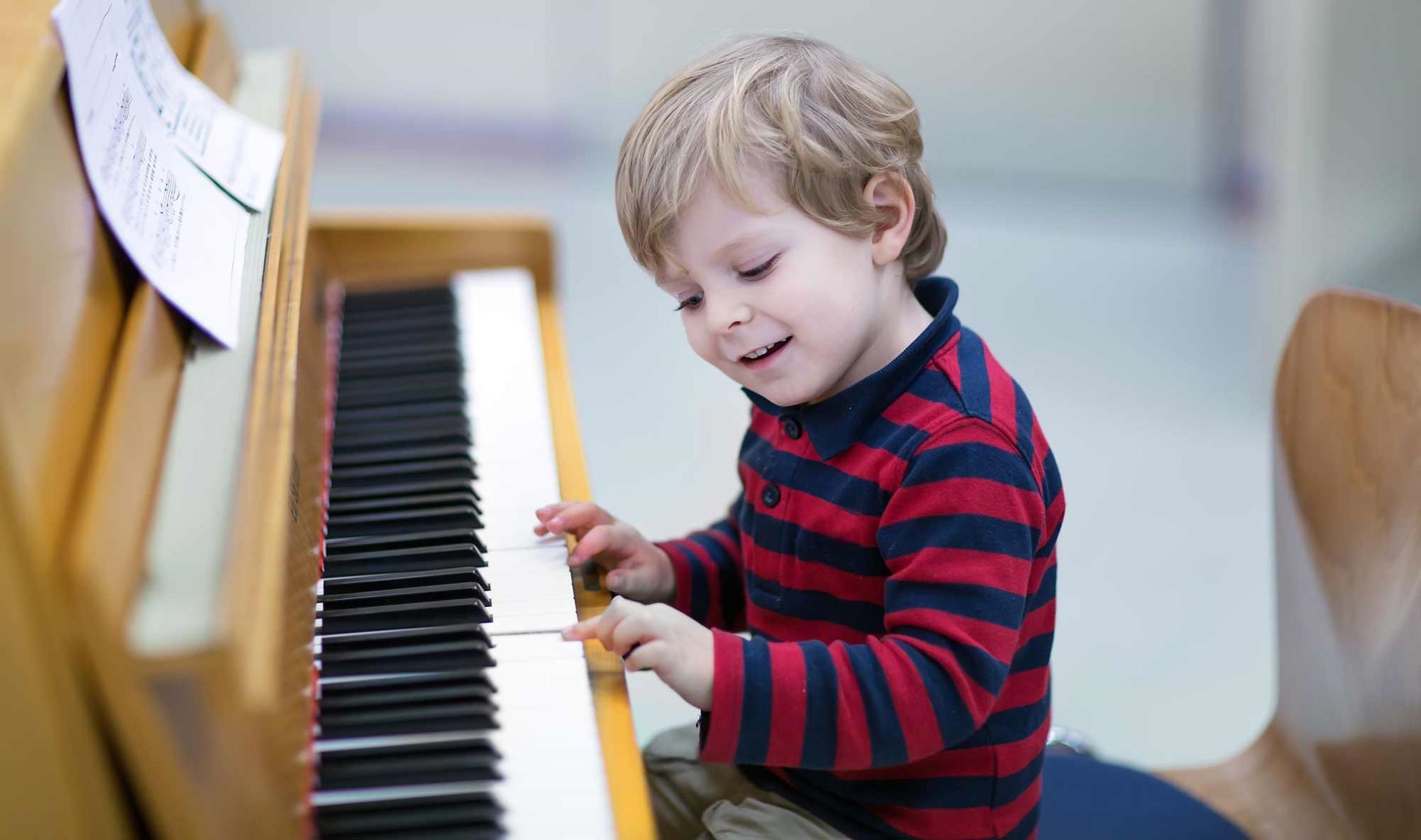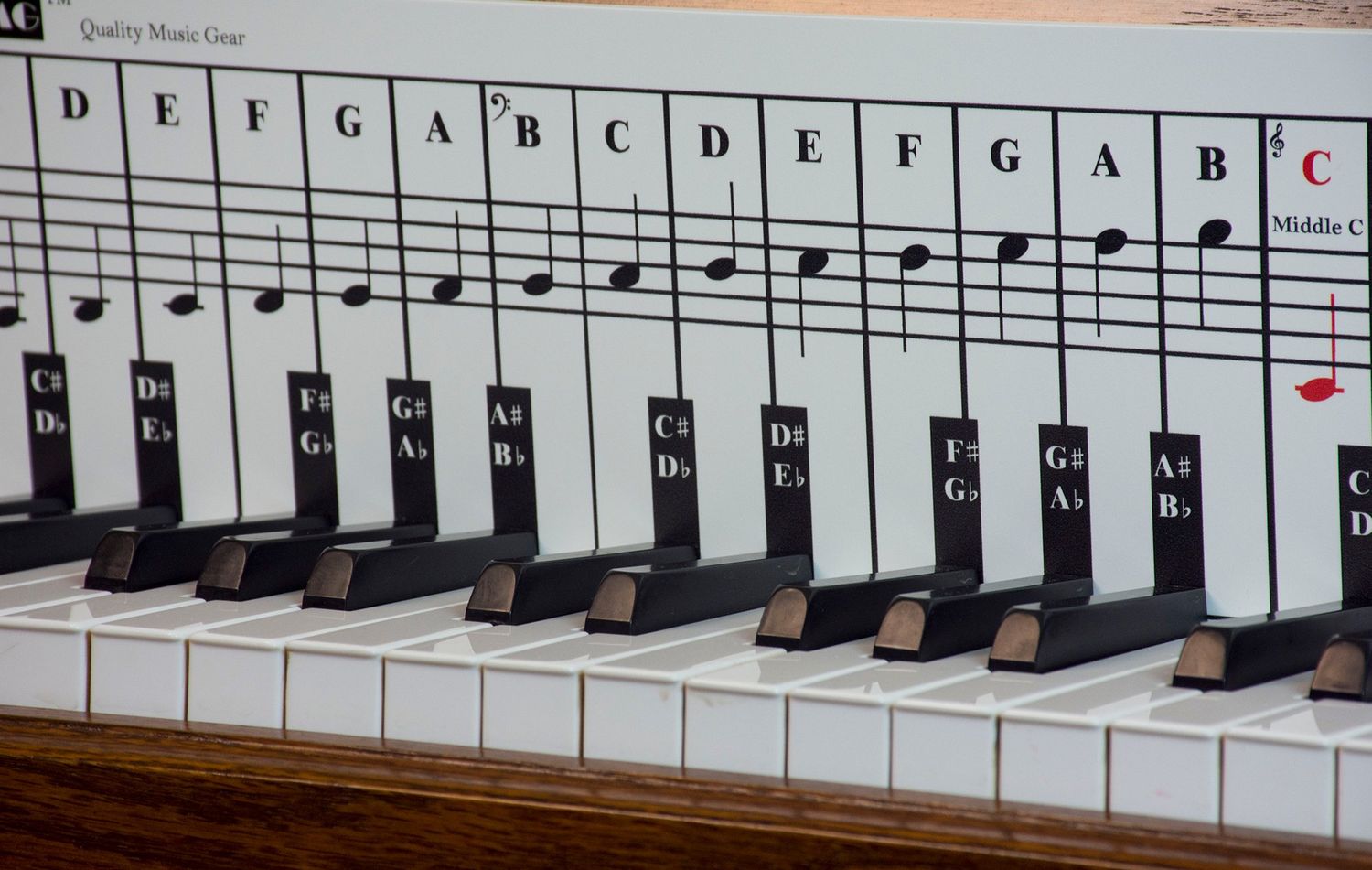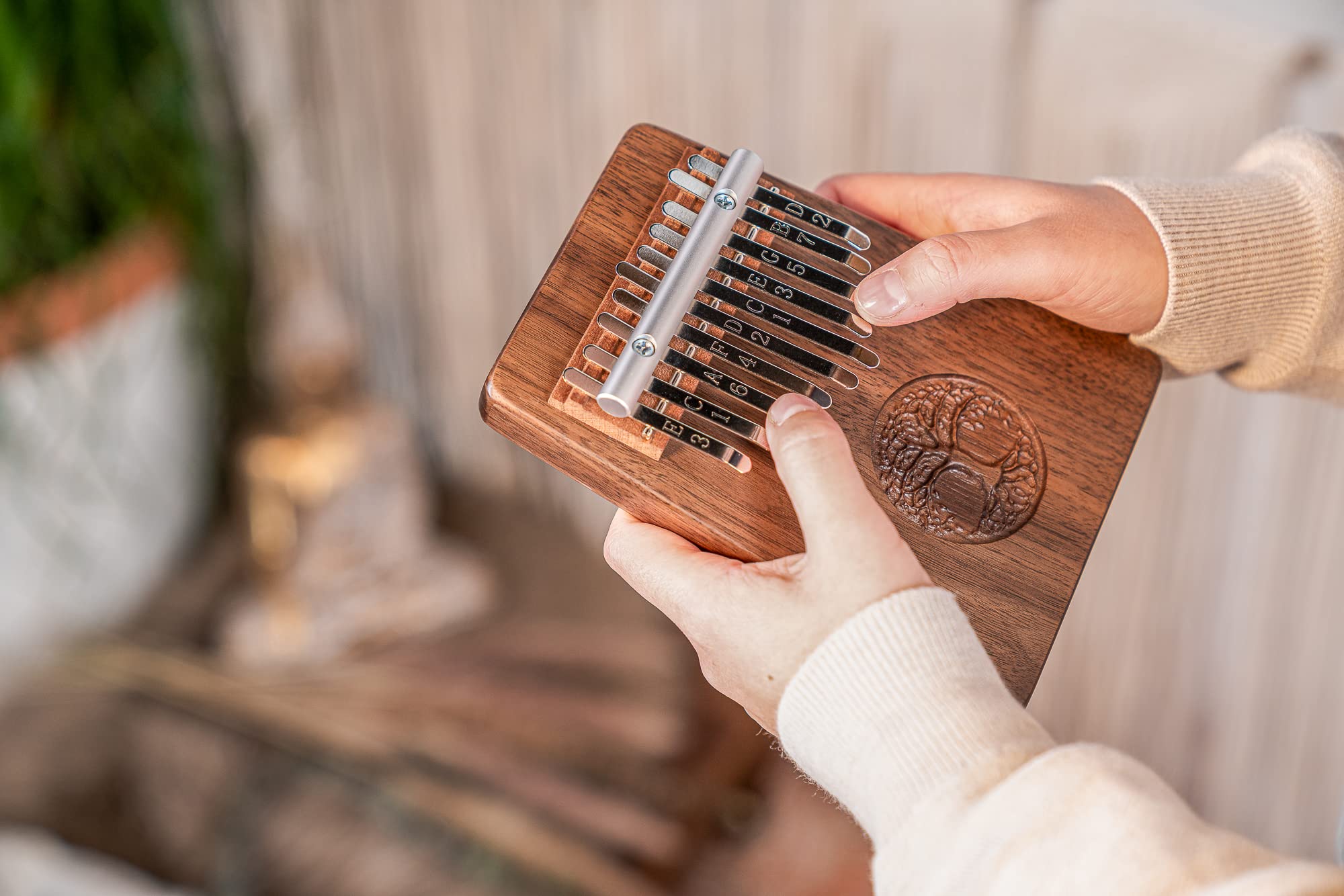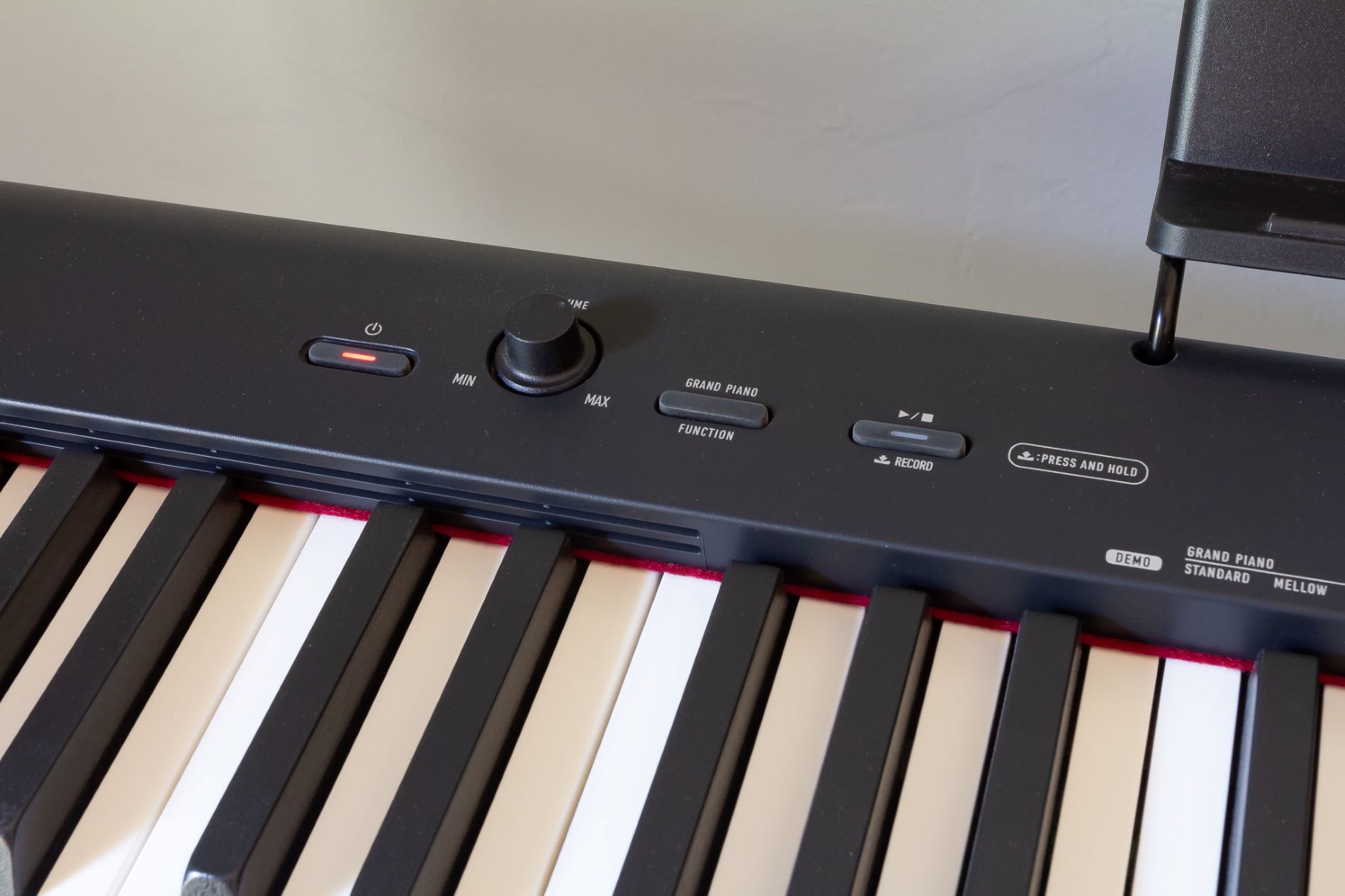Home>Instruments>Piano>How To Play Faster Piano


Piano
How To Play Faster Piano
Published: February 11, 2024
Learn how to play piano faster with expert tips and techniques. Master the art of playing piano with speed and precision. Unlock your full potential today!
(Many of the links in this article redirect to a specific reviewed product. Your purchase of these products through affiliate links helps to generate commission for AudioLover.com, at no extra cost. Learn more)
Table of Contents
Introduction
Playing the piano is a beautiful and rewarding skill that offers a wide range of musical possibilities. Whether you are a beginner or an experienced pianist, the desire to play faster and with greater agility is a common aspiration. Developing speed and dexterity on the piano requires patience, practice, and a deep understanding of technique. In this article, we will explore various strategies and exercises to help you play the piano faster and more fluidly.
By mastering hand position, finger dexterity, and proper technique, you can significantly enhance your piano playing capabilities. Additionally, incorporating essential tools such as metronomes and practicing scales and arpeggios will contribute to your overall speed and accuracy. Moreover, learning to read ahead and internalize musical patterns will enable you to anticipate and execute rapid passages with ease.
Whether you aspire to perform intricate classical compositions or lively jazz pieces, the techniques and tips outlined in this article will serve as valuable assets in your journey to becoming a faster and more proficient pianist. So, let’s delve into the intricacies of piano playing and discover how to elevate your speed and agility at the keys.
Understanding Hand Position
Proper hand position is fundamental to playing the piano with speed and accuracy. When your hands are correctly positioned, you can optimize your finger movements and reach challenging passages more effectively. Begin by sitting at the piano with a straight posture and relaxed shoulders. Your wrists should be level with the keyboard, and your fingers curved naturally, hovering over the keys.
It’s crucial to maintain a balanced hand position, distributing the weight evenly across your fingers. The thumb is often the key to achieving this balance. When playing, the thumb should be positioned slightly bent and ready to strike the keys without collapsing or tensing up. The rest of your fingers should remain relaxed and poised, allowing for swift and precise movements.
Furthermore, understanding the concept of hand rotation can significantly enhance your speed and control. Hand rotation involves pivoting your hand from the wrist to reach notes that are spaced far apart. By incorporating this technique, you can navigate across the keyboard more efficiently, minimizing unnecessary strain on your fingers and wrists.
As you practice, pay close attention to any tension in your hands and make adjustments to alleviate it. Tension can impede speed and accuracy, so cultivating a relaxed hand position is paramount. Additionally, regular stretching exercises for your hands and fingers can help maintain flexibility and prevent fatigue, allowing you to play with greater ease and swiftness.
By mastering the art of proper hand position, you lay a solid foundation for developing speed and agility at the piano. Embracing a relaxed and balanced approach to hand placement will empower you to execute intricate passages with finesse and fluidity, ultimately enhancing your overall piano playing experience.
Mastering Finger Dexterity
Developing finger dexterity is essential for playing the piano with speed and precision. Your fingers act as the primary conduits for translating musical ideas into sound, making their agility and strength crucial to your performance. To enhance finger dexterity, it’s beneficial to engage in targeted exercises that specifically focus on individual finger strength and coordination.
One effective exercise for building finger dexterity is practicing scales in various patterns and rhythms. Scales allow you to isolate each finger and train them to move independently and accurately. Start with simple major and minor scales, and gradually incorporate more complex patterns, such as contrary motion and chromatic scales. This systematic approach will not only bolster your finger dexterity but also familiarize you with different tonalities and hand positions.
Another valuable technique for improving finger agility is practicing arpeggios. Arpeggios involve playing the individual notes of a chord in rapid succession, requiring precise finger movements and control. By incorporating arpeggio exercises into your practice routine, you can strengthen your fingers and develop the ability to navigate challenging passages with ease.
Furthermore, finger strengthening exercises, such as trills and repetitive finger tapping, can significantly enhance dexterity and endurance. These exercises focus on building the muscles in your fingers and promoting flexibility, enabling you to execute rapid and intricate passages with confidence.
It’s important to approach these exercises with patience and consistency. Practicing for short, focused intervals on a regular basis is more effective than sporadic, extended sessions. Additionally, paying attention to proper finger placement and utilizing the weight of your arms to support your fingers can optimize your dexterity and prevent fatigue.
By dedicating time to mastering finger dexterity through targeted exercises and mindful practice, you can elevate your piano playing to new heights. The enhanced agility and control in your fingers will empower you to tackle challenging repertoire with confidence and fluidity, ultimately enriching your musical expression and performance capabilities.
Practicing Scales and Arpeggios
Practicing scales and arpeggios is a cornerstone of piano technique and an effective method for enhancing speed and agility. Scales, in particular, provide a structured framework for developing finger strength, coordination, and familiarity with different keys. Whether you’re a beginner or an advanced pianist, incorporating scale practice into your routine can yield significant improvements in your playing.
Begin by mastering major and minor scales in all keys, starting with a comfortable tempo and gradually increasing speed as you become more proficient. Focusing on evenness and clarity of each note is crucial, as it cultivates precision and control in your playing. Once you feel confident with basic scale patterns, you can explore more advanced variations, such as contrary motion, double thirds, and chromatic scales, to further challenge and refine your technique.
Arpeggios, with their rapid succession of notes, are invaluable for developing finger agility and dexterity. Practicing arpeggios in various inversions and rhythmic patterns not only strengthens your fingers but also enhances your ability to navigate complex passages with fluency and ease. Additionally, integrating arpeggios into your daily practice routine can expand your understanding of harmonic structures and improve your overall musicality.
When practicing scales and arpeggios, it’s essential to maintain a relaxed hand position and pay attention to the quality of sound produced. Utilize the weight of your arms to generate a rich and resonant tone, and strive for uniformity in articulation and dynamics across all keys and patterns. By approaching scale and arpeggio practice with mindfulness and intention, you can refine your technique and lay a solid foundation for playing with increased speed and accuracy.
Moreover, incorporating scales and arpeggios into your warm-up routine can effectively prepare your fingers and mind for more demanding repertoire. The systematic and disciplined approach to scale and arpeggio practice not only enhances technical proficiency but also fosters a deeper understanding of music theory and structure.
By dedicating focused time to practicing scales and arpeggios, you can cultivate the technical prowess and agility necessary to tackle challenging piano passages with confidence and finesse. These foundational exercises serve as building blocks for honing your skills and unlocking your full potential as a pianist.
Utilizing Proper Technique
Employing proper technique is essential for achieving speed and precision in piano playing. A solid technical foundation not only enhances your performance capabilities but also minimizes the risk of injury and fatigue. When approaching the piano, it’s important to focus on posture, hand position, and overall body mechanics to optimize your playing potential.
Begin by ensuring that your posture is upright yet relaxed, with your feet flat on the floor. Maintaining a balanced and centered posture allows for unrestricted movement and efficient energy transfer while playing. Additionally, sitting at the appropriate height in relation to the keyboard promotes optimal hand positioning and reduces strain on your arms and wrists.
Hand position plays a pivotal role in executing piano passages with speed and agility. Cultivate a natural and relaxed hand shape, with gently curved fingers and a flexible wrist. Avoiding unnecessary tension in your hands and fingers is crucial, as it impedes fluidity and hinders speed. By embracing a relaxed hand position and mindful finger placement, you can navigate the keyboard with greater ease and finesse.
Furthermore, integrating proper arm and wrist movements into your playing technique can significantly enhance your speed and control. Utilizing the weight of your arms to generate sound and employing subtle wrist motions for articulation and phrasing can elevate your playing to a new level of expressiveness and agility. Additionally, understanding the concept of arm weight and its application to different playing scenarios can empower you to produce a rich and resonant tone while maintaining dexterity and speed.
Another crucial aspect of proper technique is efficient pedal usage. Understanding when and how to use the sustain pedal, as well as the una corda and sostenuto pedals, can greatly impact the clarity and fluidity of your playing. Mastering the nuances of pedal technique allows for seamless transitions between chords and notes, contributing to a polished and dynamic performance.
By prioritizing proper technique and mindful playing habits, you pave the way for enhanced speed and agility at the piano. Embracing a holistic approach to technique not only elevates your playing capabilities but also fosters a deeper connection to the music, enabling you to convey emotion and musicality with greater finesse and fluidity.
Using Metronome and Timing
The metronome serves as a valuable tool for honing speed and precision in piano playing. By practicing with a metronome, you can develop a strong sense of timing and rhythm, laying the groundwork for consistent and accurate performances. Whether you’re working on technical exercises, scales, or complex repertoire, integrating the metronome into your practice routine can yield significant improvements in your playing.
When using a metronome, start at a comfortable tempo and gradually increase the speed as you become more adept. Consistent practice with the metronome not only enhances your ability to play at faster tempos but also cultivates a steady and reliable internal pulse. This internalized sense of timing is invaluable when tackling intricate passages and maintaining a consistent tempo throughout a piece.
Moreover, the metronome can aid in identifying and addressing specific technical challenges. By setting the metronome to a slower tempo, you can focus on executing passages with precision and clarity, gradually increasing the speed as you build proficiency. This deliberate and systematic approach to practicing with the metronome allows for targeted improvement in speed and accuracy.
Additionally, practicing with varied rhythmic subdivisions, such as eighth notes, triplets, and sixteenth notes, while following the metronome’s beat, enhances your rhythmic dexterity and overall sense of timing. This diversified rhythmic practice sharpens your ability to navigate complex rhythmic patterns and syncopations, ultimately bolstering your speed and agility at the piano.
It’s important to approach metronome practice with patience and discipline, focusing on maintaining a consistent tempo and precise articulation. As you progress, challenge yourself to play slightly ahead or behind the metronome beat, developing a nuanced understanding of timing and phrasing. This flexibility in timing allows for expressive and dynamic interpretations while retaining a strong sense of rhythmic integrity.
By incorporating the metronome into your daily practice regimen, you can refine your sense of timing, enhance your rhythmic precision, and elevate your overall speed and accuracy at the piano. The metronome serves as a steadfast guide in your journey towards mastering tempo and rhythm, empowering you to deliver captivating and polished performances with unwavering precision.
Learning to Read Ahead
Developing the ability to read ahead is a fundamental skill that significantly contributes to playing the piano with speed and fluency. When you can anticipate upcoming notes and musical phrases, you gain a competitive edge in executing rapid passages and complex rhythms. This proactive approach to reading music not only enhances your technical proficiency but also fosters a deeper understanding of musical structure and expression.
One effective strategy for improving your ability to read ahead is to practice sight-reading regularly. Engaging in sight-reading exercises exposes you to a wide range of musical patterns and challenges your capacity to process and interpret music in real time. As you become more adept at sight-reading, you naturally develop the skill of reading ahead, allowing you to navigate unfamiliar pieces with greater confidence and agility.
Moreover, familiarizing yourself with common musical motifs, chord progressions, and scale patterns enables you to anticipate upcoming notes and harmonies. By internalizing these musical patterns, you can preemptively position your hands and fingers, facilitating seamless transitions between notes and chords. This proactive approach minimizes hesitation and empowers you to execute passages with swiftness and precision.
Additionally, practicing rhythmic exercises and rhythmic dictation enhances your ability to read ahead and interpret complex rhythmic structures accurately. By internalizing rhythmic patterns and subdivisions, you can anticipate rhythmic variations and syncopations, enabling you to execute intricate rhythms with confidence and fluidity.
When learning new pieces, actively analyze the musical score for recurring melodic and harmonic motifs. Identifying these patterns allows you to read ahead and prepare for upcoming thematic developments, facilitating a more seamless and intuitive performance. By recognizing and internalizing musical patterns, you can navigate passages with greater ease and finesse.
Embracing the art of reading ahead not only enhances your technical prowess but also fosters a deeper connection to the music, allowing for more expressive and engaging performances. By honing your ability to anticipate and interpret musical phrases, you empower yourself to play with heightened agility, fluency, and musical insight.
Conclusion
Mastering the art of playing the piano with speed and agility is a journey that encompasses technical proficiency, musical insight, and dedicated practice. By understanding the nuances of hand position, finger dexterity, and proper technique, pianists can cultivate the skills necessary to navigate complex passages with finesse and precision. Incorporating the use of a metronome, practicing scales and arpeggios, and developing the ability to read ahead are essential components in the pursuit of greater speed and fluency at the keys.
Furthermore, embracing a holistic approach to piano playing, which includes attentive posture, relaxed hand position, and mindful use of arm weight, contributes to a more nuanced and expressive performance. The integration of proper technique not only enhances speed and accuracy but also minimizes the risk of injury and fatigue, allowing for sustained and enjoyable practice sessions.
As pianists dedicate themselves to the art of playing faster, they embark on a transformative journey that not only elevates their technical prowess but also deepens their musical understanding and interpretive abilities. The pursuit of speed and agility at the piano is a testament to the dedication and passion of musicians who strive for excellence and artistic growth.
In conclusion, the strategies and techniques explored in this article serve as valuable resources for pianists seeking to enhance their speed and agility. By honing fundamental skills, embracing disciplined practice habits, and nurturing a proactive approach to reading music, pianists can unlock their full potential and embark on a fulfilling and rewarding musical journey. With perseverance, patience, and a commitment to continuous improvement, pianists can conquer technical challenges and revel in the joy of playing the piano with newfound speed, agility, and artistry.


